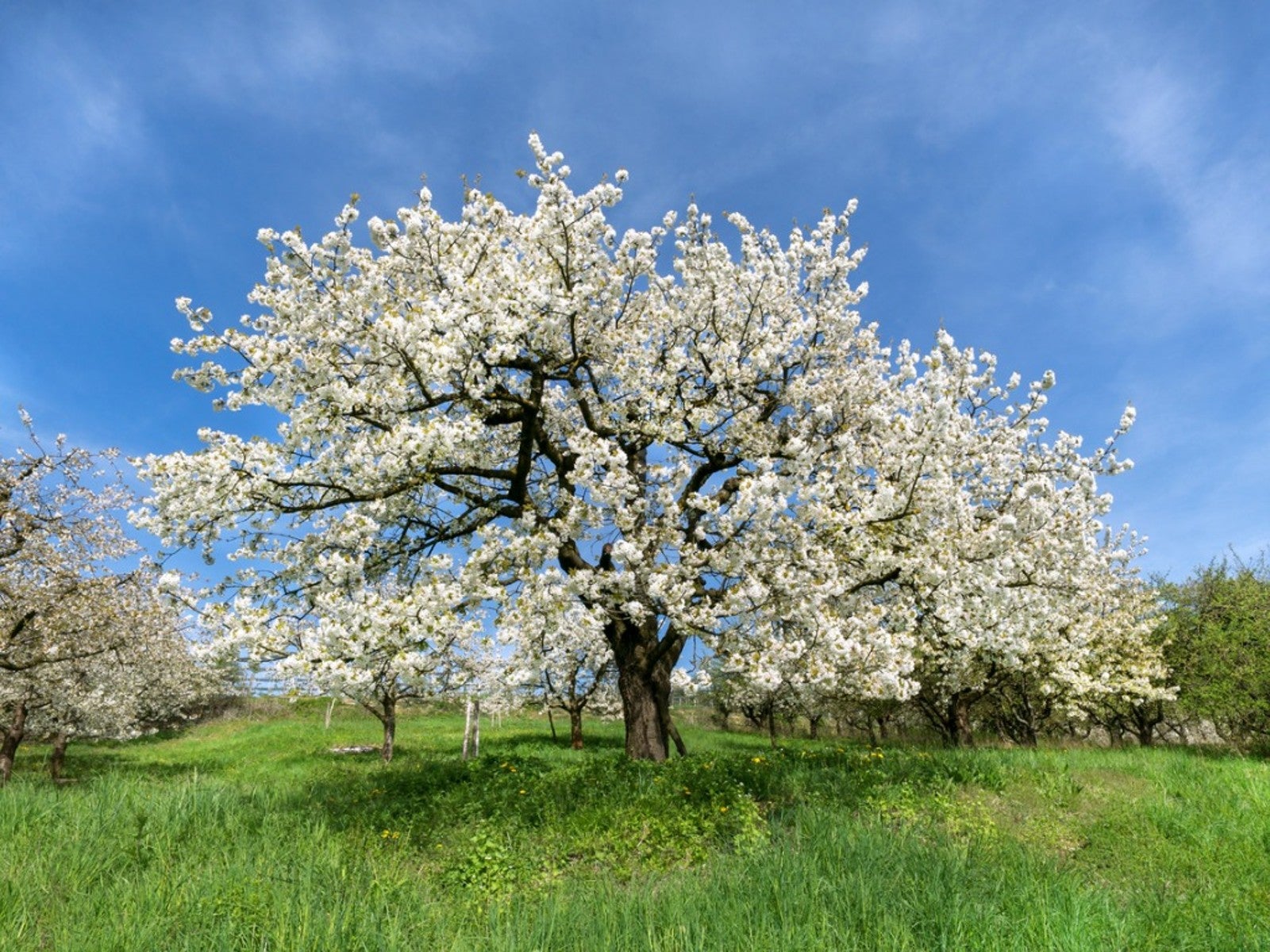
Introduction
White flowering trees are a stunning addition to any landscape, bringing a sense of elegance and tranquility. Their blooms signal the arrival of spring and summer, providing a beautiful backdrop for gardens, parks, and urban spaces. This article will explore various types of white flowering trees, their identification, growing conditions, care requirements, and benefits. We will also include a detailed FAQ section to address common questions about these trees.
Understanding White Flowering Trees
White flowering trees are characterized by their striking white blooms, which can vary in shape, size, and fragrance. These trees can be deciduous or evergreen, and they thrive in various climates and soil types. Understanding the different species and their unique features is essential for proper identification and care.
Importance of White Flowering Trees
- Aesthetic Appeal: White flowering trees enhance the beauty of landscapes and gardens.
- Symbolism: White flowers often symbolize purity, innocence, and new beginnings.
- Ecological Benefits: They provide habitats for wildlife and attract pollinators like bees and butterflies.
- Shade and Shelter: Many white flowering trees offer shade, making them ideal for parks and residential areas.
Types of White Flowering Trees
Spring-Blooming White Flowering Trees
Spring is a vibrant time for white flowering trees, as many species burst into bloom, creating stunning displays. Here are some notable spring-blooming varieties:
- Yoshino Cherry (Prunus × yedoensis)
- Description: This tree is famous for its delicate white blossoms that appear in early spring, often with a hint of pink.
- Height: 20-30 feet
- USDA Hardiness Zone: 5-8
- Bloom Time: Early spring
- White Dogwood (Cornus florida)
- Description: Known for its showy white bracts that resemble petals, this native tree is a classic spring bloomer.
- Height: 20-30 feet
- USDA Hardiness Zone: 5-9
- Bloom Time: Late winter to early spring
- Bradford Pear (Pyrus calleryana)
- Description: This small to medium-sized tree produces clusters of fragrant white flowers in early spring.
- Height: 30-50 feet
- USDA Hardiness Zone: 5-9
- Bloom Time: Early spring
- Canada Plum (Prunus nigra)
- Description: This tree features large clusters of white flowers and produces edible fruits.
- Height: 15-25 feet
- USDA Hardiness Zone: 3-7
- Bloom Time: Early spring
- Carolina Silverbell (Halesia tetraptera)
- Description: A small to medium tree with drooping clusters of bell-shaped white flowers.
- Height: 30-40 feet
- USDA Hardiness Zone: 4-8
- Bloom Time: Early spring
Summer-Blooming White Flowering Trees
While spring is the peak season for white flowering trees, several species bloom in the summer, providing continued beauty:
- Crape Myrtle (Lagerstroemia)
- Description: Known for its long blooming season, this tree produces clusters of white flowers throughout the summer.
- Height: 15-30 feet
- USDA Hardiness Zone: 6-9
- Bloom Time: Summer
- Fringe Tree (Chionanthus virginicus)
- Description: This tree is admired for its delicate, fringe-like clusters of white flowers.
- Height: 12-20 feet
- USDA Hardiness Zone: 3-9
- Bloom Time: Late spring to early summer
- Kousa Dogwood (Cornus kousa)
- Description: This tree features showy white bracts and produces edible fruits.
- Height: 15-30 feet
- USDA Hardiness Zone: 5-8
- Bloom Time: Late spring to early summer
- Sweetbay Magnolia (Magnolia virginiana)
- Description: A fragrant tree with cup-shaped white flowers that bloom in the summer.
- Height: 10-30 feet
- USDA Hardiness Zone: 5-10
- Bloom Time: Late spring to summer
- White Mulberry (Morus alba)
- Description: This tree produces small white flowers followed by edible fruits.
- Height: 30-50 feet
- USDA Hardiness Zone: 4-9
- Bloom Time: Spring to summer
Growing Conditions for White Flowering Trees
Soil Requirements
Most white flowering trees prefer well-drained soil with a slightly acidic to neutral pH. It’s essential to amend the soil with organic matter to improve drainage and fertility.
Sunlight Needs
White flowering trees generally thrive in full sun, requiring at least 6 hours of direct sunlight daily. Some species, like the Kousa Dogwood, can tolerate partial shade.
Watering
Regular watering is crucial, especially during the first year after planting. Newly planted trees should receive deep watering sessions to establish strong root systems. Once established, many white flowering trees are drought-tolerant.
Fertilization
Fertilizing in early spring with a balanced fertilizer can promote healthy growth and flowering. Follow the manufacturer’s instructions for application rates.
Care and Maintenance
Pruning
Pruning is essential for maintaining the shape and health of white flowering trees. The best time to prune is during the dormant season, typically in late winter or early spring before new growth begins. Remove dead, damaged, or crossing branches to improve air circulation.
Pest and Disease Management
White flowering trees can be susceptible to various pests and diseases, including:
- Aphids: These small insects can cause leaf curling and stunted growth. Insecticidal soap or neem oil can help control infestations.
- Powdery Mildew: This fungal disease appears as a white powdery substance on leaves. Improving air circulation and applying fungicides can help manage this issue.
- Scale Insects: These pests can weaken trees by sucking sap. Horticultural oil can be effective in controlling scale.
Mulching
Applying a layer of mulch around the base of the tree helps retain moisture, suppress weeds, and regulate soil temperature. Use organic mulch, such as wood chips or bark, and keep it a few inches away from the trunk.
Benefits of White Flowering Trees
- Aesthetic Appeal: Their striking blooms enhance the beauty of any landscape.
- Wildlife Habitat: They attract pollinators and provide food and shelter for birds and other wildlife.
- Shade and Cooling: Many species provide shade, helping to cool surrounding areas and reduce energy costs.
- Erosion Control: The root systems of trees help stabilize soil and prevent erosion.
White Flowering Trees Identification Guide
To help with the identification of white flowering trees, here is a table summarizing key characteristics:
| Common Name | Scientific Name | Classification | USDA Hardiness Zone | Height | Bloom Time |
|---|---|---|---|---|---|
| Yoshino Cherry | Prunus × yedoensis | Rosaceae | 5-8 | 20-30 ft | Early Spring |
| White Dogwood | Cornus florida | Cornaceae | 5-9 | 20-30 ft | Late Winter |
| Bradford Pear | Pyrus calleryana | Rosaceae | 5-9 | 30-50 ft | Early Spring |
| Canada Plum | Prunus nigra | Rosaceae | 3-7 | 15-25 ft | Early Spring |
| Carolina Silverbell | Halesia tetraptera | Styracaceae | 4-8 | 30-40 ft | Early Spring |
| Crape Myrtle | Lagerstroemia | Lythraceae | 6-9 | 15-30 ft | Summer |
| Fringe Tree | Chionanthus virginicus | Oleaceae | 3-9 | 12-20 ft | Late Spring |
| Kousa Dogwood | Cornus kousa | Cornaceae | 5-8 | 15-30 ft | Late Spring |
| Sweetbay Magnolia | Magnolia virginiana | Magnoliaceae | 5-10 | 10-30 ft | Late Spring |
| White Mulberry | Morus alba | Moraceae | 4-9 | 30-50 ft | Spring to Summer |
FAQs
What is the best time to plant white flowering trees?
The best time to plant white flowering trees is in early spring or fall when the weather is cooler, and the soil is moist.
How much sun do white flowering trees need?
Most white flowering trees require full sun, which means they need at least 6 hours of direct sunlight per day. Some species can tolerate partial shade.
How often should I water my white flowering tree?
Water your white flowering tree regularly, especially during the first year after planting. The soil should remain moist but not waterlogged.
What is the average lifespan of a white flowering tree?
The lifespan of white flowering trees varies by species, but many can live for 50 to 100 years with proper care.
Can white flowering trees grow in containers?
Some smaller or dwarf varieties can be grown in containers, but most require ample space for their root systems and will eventually outgrow a pot.
How do I identify white flowering trees?
To identify white flowering trees, observe their bloom shape, size, and growth habit. Refer to identification guides or consult local horticulturalists for assistance.
Conclusion
White flowering trees are a beautiful and beneficial addition to any landscape. Their stunning blooms, ecological benefits, and ability to provide shade make them a popular choice for gardeners and landscapers alike. By understanding the various types of white flowering trees, their growing conditions, and care requirements, you can select the perfect tree for your outdoor space. Whether you choose the elegant Yoshino Cherry or the fragrant Sweetbay Magnolia, these trees will enhance the beauty and tranquility of your garden for years to come.For more information on white flowering trees, you can visit the Wikipedia page on flowering trees.


